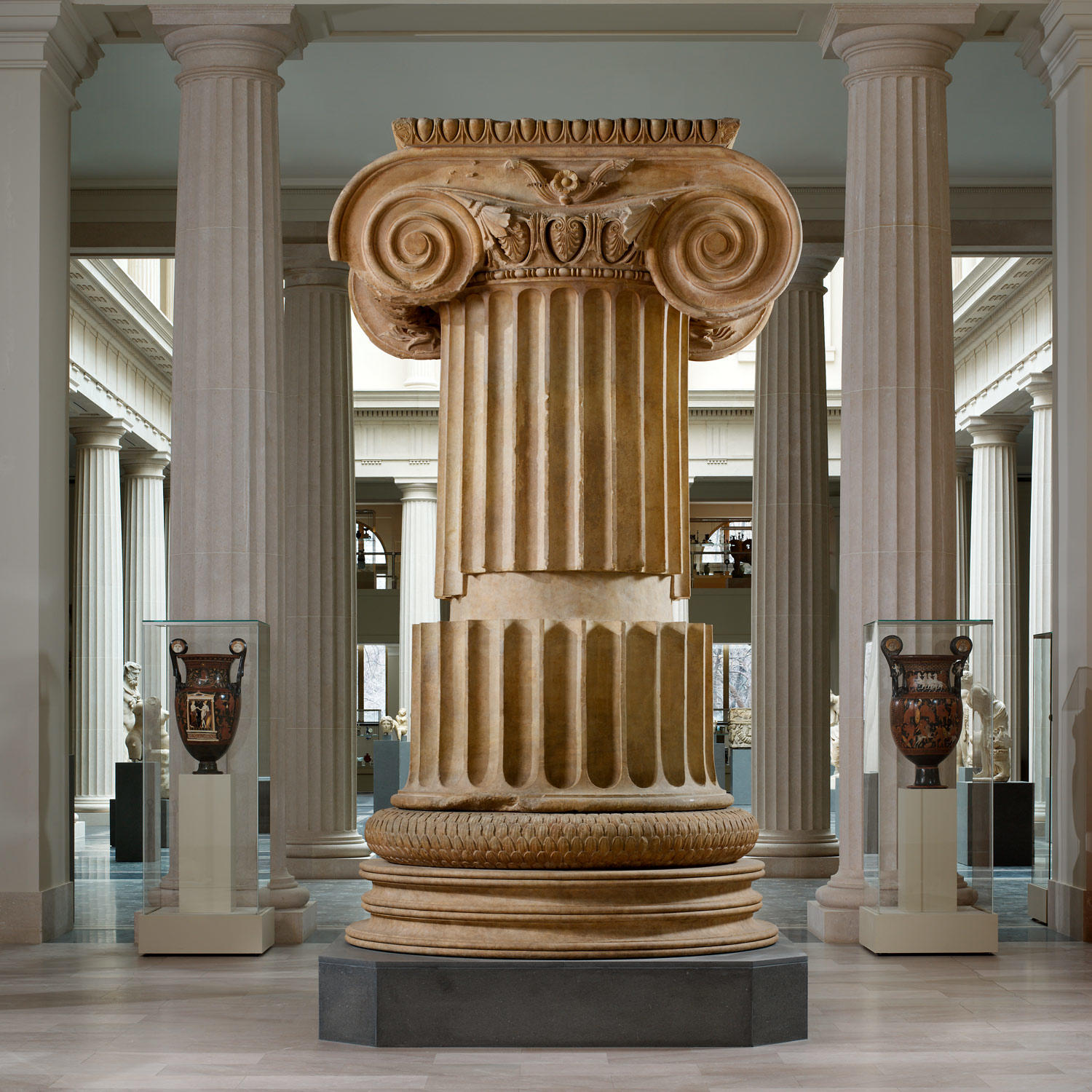Introduction
Art is an ancient way of expression of creative thought. Over the centuries of its existence, art has developed many forms and directions. Architecture, however, remains one of the most popular forms of art. The purpose of this digital field trip reflection is to present and describe an architectural artifact found in the archive of the Ancient Greece Architecture Gallery at the Metropolitan Museum of Art. Further, the selected item will be discussed as evidence of the way Ancient Greek culture continues to influence contemporary architecture.
Selected Item and Its Origin
The architectural artifact chosen for this reflection is a column. The choice fell on this particular item because a column is, perhaps, one of the most widely known elements of Ancient Greek architecture. Specifically, as shown in Figure 1, the selected item is a marble column from the Temple of Artemis at Sardis. The column dates back to 300 B.C., it is made of marble, and is slightly taller than 142 inches (“Marble column from the Temple of Artemis at Sardis,” 2018). This is a section of a much larger column whose original size was about 58 feet in height. The item was nicely carved, and its decorative elements include multiple fine components and patterns that are small in size. This indicates and it took outstanding craftsmanship to create this architectural artifact. The column was used as a supportive element in the architecture of the Temple of Artemis. Its size and appearance made historians believe that it was installed either in the inner room of the temple or its inner back porch. This was one of many columns included in the original structure of the Temple.
Contemporary Architecture Item
Popularized by Ancient Greek culture, columns became one of the essential elements of the architecture of many historical periods that came later. For example, columns represented a notable element in Gothic architecture that that originated in the Mediaeval. Further, columns traveled to the Renaissance. Eventually, this practical and, at the same time, unique and beautiful element of architecture made its way to the modern and contemporary periods in art.
Multiple items created by contemporary architects all around the world include columns as an essential element of décor and structure. One of the examples of the use of columns in contemporary architecture is Agri Chapel in Nagasaki, Japan. The chapel was finished in 2016, and it is famous for its unique style based on the clever use of wooden columns (“Agri Chapel / Yu Momoeda Architecture Office,” 2017). The group of professionals who worked on the chapel was led by Yu Momoeda. As shown in Figure 2, Momoeda’s columns resemble trees in their shape and are organized in a manner that creates fractal branching and, when observed from below, creates beautiful geometric shapes. Practically, a conclusion can be made that Ancient Greek columns continue to influence contemporary architectures and appear in various works of architectural art. However, the classic shape of Ancient Greek columns does not remain unchanged as the contemporary creators use their imagination and skills to add uniqueness to their pieces.
Conclusion
Ancient Greece is known for a multitude of concepts and trends in art and sciences that were initiated in this magnificent state of the past. The influence Ancient Greece produced on the global culture continues to manifest in a variety of ways. Specifically, Ancient Greek architecture was so authentic that it managed to make its way to the contemporary architectural design. The two items presented in this paper show that the elements of Ancient Greek architecture can be found in the masterpieces created by present-day professionals. However, the style and appearance of the Greek elements did not remain unchanged.
References
Agri Chapel / Yu Momoeda Architecture Office. (2017). Web.
Marble column from the Temple of Artemis at Sardis. (2018). Web.
Appendices

